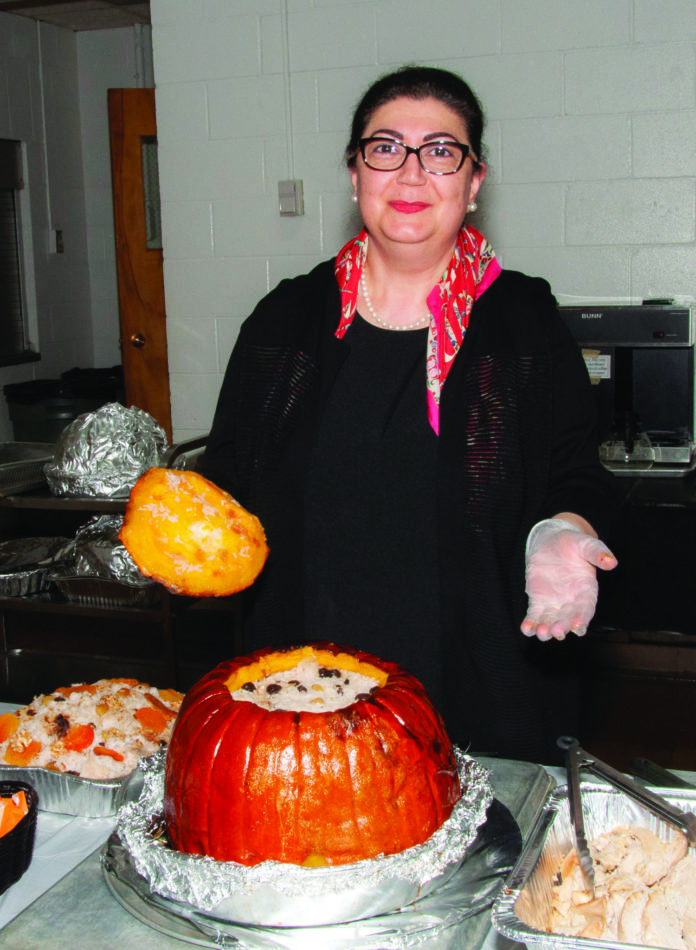By Lucy Joulfayan-Yeghyayan
As you realize this recipe does not include any measurements, the purpose is to introduce the original recipe. In the older days, people in the villages did not use numbered measuring cups nor spoons, but with reasoning, and “measurements by the eye” they produced the best and most delicious meals for their families. Every cook in a family knows the eating habits and preferences of the family members. Let that knowledge guide you.
Ghapama is one of our oldest traditional, national dishes and a pride of the Armenian cuisine. Historically, it has been celebrated as a centerpiece during the Armenian New Year’s Eve, weddings and other feast related occasions, our folk culture has included it in the popular art forms, we have songs and dance about the ghapama, and it is present in drawings and literature. For centuries, every part of our ethnic cuisine in the ancestral homeland and beyond (meaning, in the several diaspora communities, historically, several diaspora communities were formed, throughout the centuries: post Genocide, and even before it, since the forced relocation of the Armenian population by the invading Tatars and Turks in the Caucasus, earlier by Shah Abbas, before it Cilicia, before it Ani, and a long list before that…. ) has maintained ghapama as one of its delicacies, the widespread fame of this dish traveled with the diaspora communities to their new villages, towns and cities, many of whom believed that the ghapama is the trademark of their own village or town because they had discovered new spices and vegetable types in their new hometowns which they added to the original ingredients of the dish, thus creating the several versions/recipes that we enjoy in our times. Traditionally, regardless of the recipe/filling, whether in the homeland or the diaspora, our ancestors baked ghapama in the Armenian “tonir” or oven.
Ghapama is offered as a main dish when prepared with meat and or other vegetarian recipes, also as a part of the desert table delicacies. The contents/ingredients may vary, and so may the spices, but what matters is for the tradition to live on especially that ( as we mentioned above ) this dish was served during the feasts including weddings. For example, in Marash, in Western Armenia, it was traditional to serve the groom and his family a ghapama dish baked with meat and grains.
Ingredients








